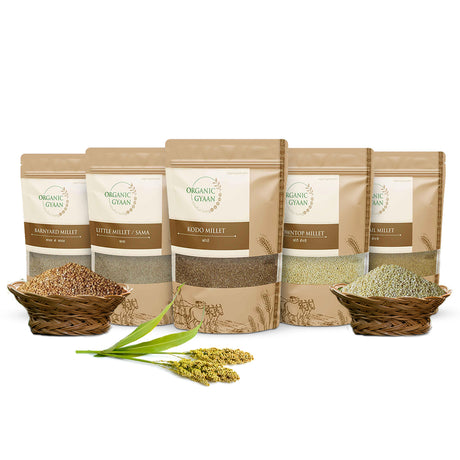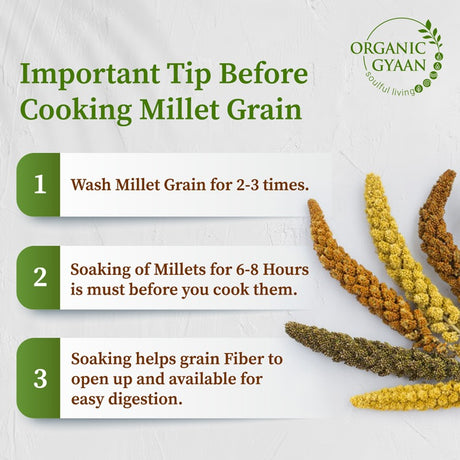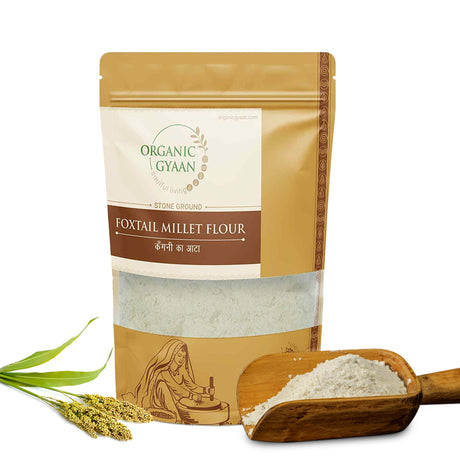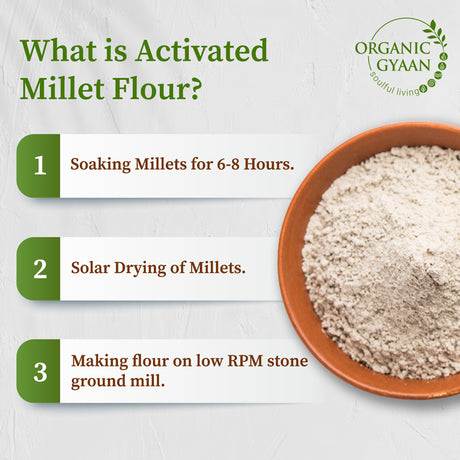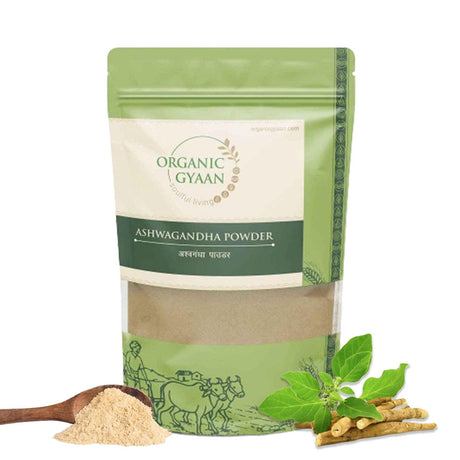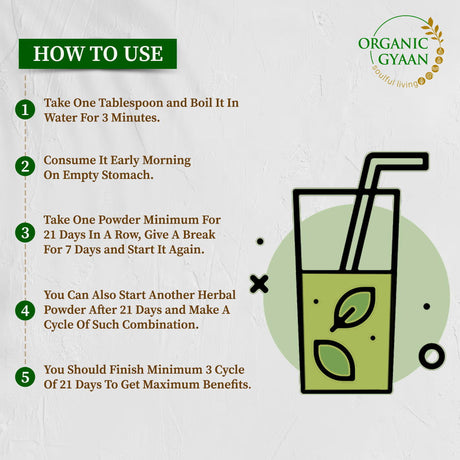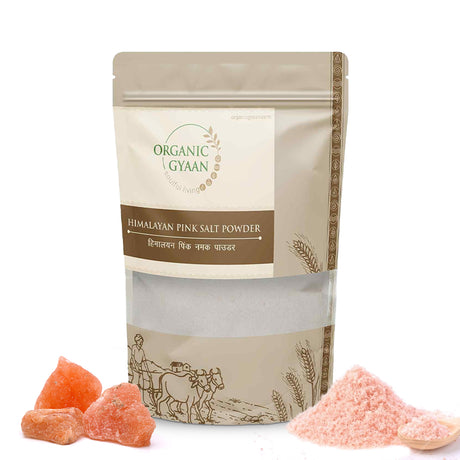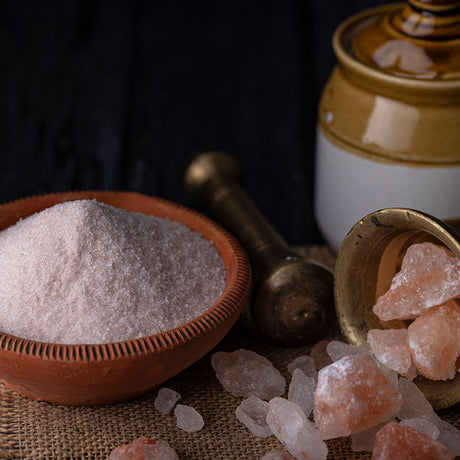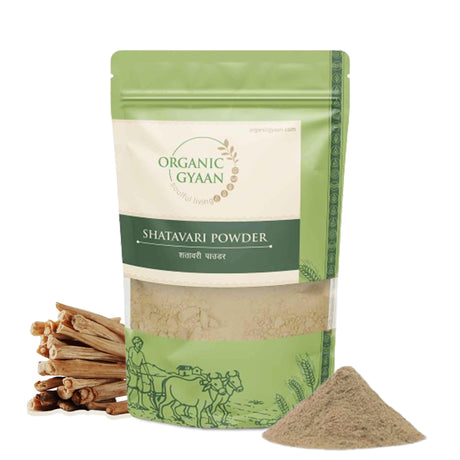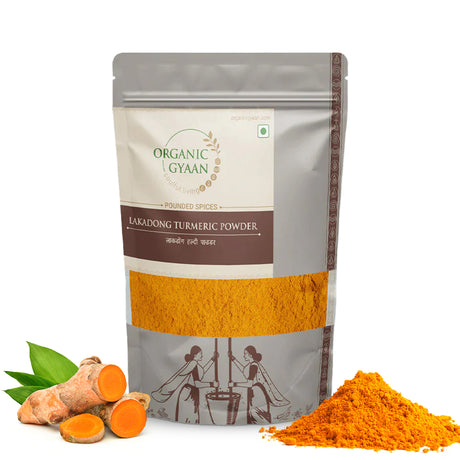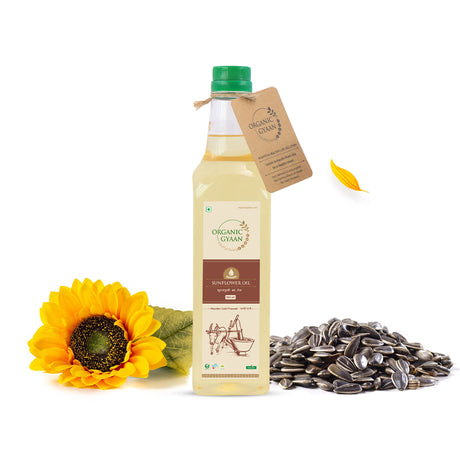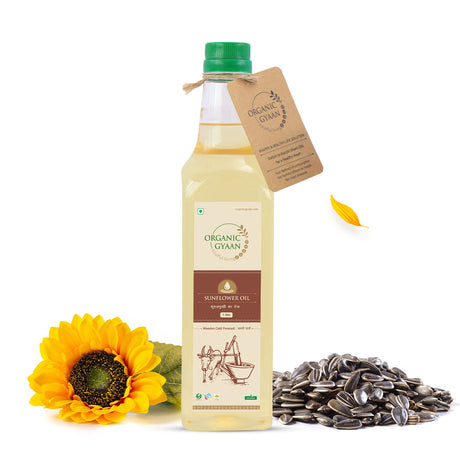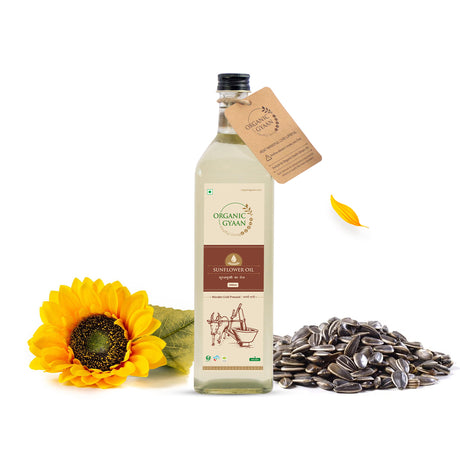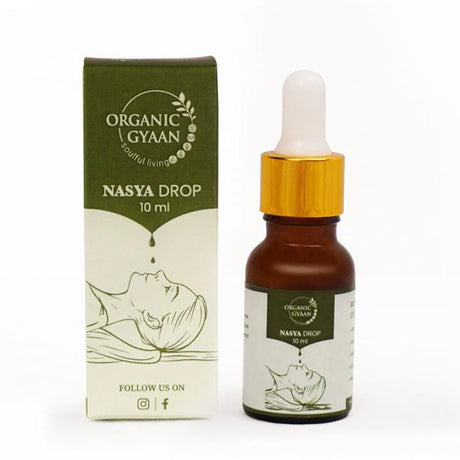मधुमेह हा जगभरातील वाढत्या आरोग्यविषयक चिंतेचा विषय आहे. परंतु रक्तातील साखरेचे व्यवस्थापन करणे म्हणजे नेहमीच गुंतागुंतीचे आहार घेणे किंवा सर्व कार्बोहायड्रेट्स काढून टाकणे असे नाही. खरं तर, काही धान्ये - विशेषतः मधुमेहासाठी बाजरीसारखे जुने धान्य - रक्तातील साखरेचे प्रमाण नैसर्गिकरित्या संतुलित करण्यास मदत करू शकतात.
बाजरी ही लहान, पौष्टिकतेने समृद्ध धान्यांचा समूह आहे जी शतकानुशतके भारतीय आणि आफ्रिकन स्वयंपाकघरात वापरली जात आहे. ते फायबरने भरलेले, पचण्यास सोपे आणि आवश्यक पोषक तत्वांनी भरलेले आहे. आणि हो, ते मधुमेह असलेल्या लोकांसाठी अविश्वसनीयपणे फायदेशीर ठरू शकतात.
तर जर तुम्हाला प्रश्न पडत असेल की, बाजरी मधुमेहासाठी चांगली आहे का? - तर उत्तर निश्चितच हो असे आहे. चला जाणून घेऊया की का आणि तुम्ही ते तुमच्या जेवणात कसे सहज समाविष्ट करू शकता.
मधुमेहासाठी बाजरी का चांगली आहे?
तांदूळ आणि गहू यासारख्या सामान्य धान्यांपेक्षा बाजरीला अनेकदा मागे टाकले जाते, परंतु त्यांना विशेष महत्त्व दिले पाहिजे - विशेषतः जेव्हा मधुमेहाच्या काळजीचा विचार केला जातो. मधुमेहासाठी बाजरी हा एक स्मार्ट पर्याय का आहे ते येथे आहे:
१. फायबर जास्त - साखरेचे शोषण कमी करते
बाजरीत आहारातील फायबर भरपूर प्रमाणात असते. यामुळे पचनक्रिया मंदावण्यास मदत होते, म्हणजेच साखर हळूहळू रक्तप्रवाहात सोडली जाते.
- जेवणानंतर साखरेचे तीव्र प्रमाण वाढणार नाही
- जास्त वेळ पोट भरल्यासारखे वाटते
- दिवसभर स्थिर उर्जेचे समर्थन करते
मधुमेह असलेल्या व्यक्तीसाठी, साखरेचे हे हळूहळू उत्सर्जन रक्तातील ग्लुकोजची पातळी अधिक स्थिर ठेवण्यास मदत करते. मधुमेहासाठी बाजरीचे हे एक प्रमुख फायदे आहेत.
२. कॉम्प्लेक्स कार्बोहायड्रेट्स - एक स्थिर ऊर्जा स्रोत
बाजरी हे जटिल कर्बोदकांपासून बनलेले असते, जे "चांगले" प्रकार असतात. हे हळूहळू विघटित होतात आणि साखरेचे तुकडे न होता दीर्घकाळ टिकणारी ऊर्जा देतात.
पांढरा भात किंवा पांढऱ्या ब्रेडच्या विपरीत, मधुमेहासाठी बाजरी रक्तातील साखर अचानक वाढवत नाही. यामुळे ते शाश्वत ऊर्जा आणि रक्तातील साखर नियंत्रणासाठी परिपूर्ण बनते.
३. नैसर्गिकरित्या ग्लूटेन-मुक्त - आतड्यांवर सौम्य
बाजरीत ग्लूटेन नसल्यामुळे, ग्लूटेन असहिष्णुता किंवा सेलिआक रोग असलेल्यांसाठी ते सुरक्षित आहेत. अशा समस्या नसलेल्या लोकांसाठी देखील, बाजरी पचण्यास सोपी असते आणि सर्वांसाठी योग्य असते - मुले आणि वृद्धांसह.
यामुळे लोक अनेकदा विचारतात: बाजरी मधुमेहासाठी आणि संवेदनशील पचनासाठी चांगली आहे का? हो, अगदी.
४. पोषक तत्वांनी परिपूर्ण - फक्त रक्तातील साखरेच्या पलीकडे
बाजरीमध्ये फक्त फायबर आणि कार्बोहायड्रेट्स नसतात. ते हे देखील देतात:
- मॅग्नेशियम - रक्तातील साखरेचे व्यवस्थापन करण्यास मदत करते आणि इन्सुलिन प्रतिसाद सुधारते
- पोटॅशियम - हृदयाचे आरोग्य आणि रक्तदाब नियंत्रणास मदत करते
- लोह आणि प्रथिने - ऊर्जा, रोगप्रतिकारक शक्ती आणि स्नायूंच्या आरोग्यासाठी आवश्यक
या सर्वांगीण फायद्यांमुळे मधुमेहासाठी बाजरी केवळ साखरेचे व्यवस्थापन करण्यासाठीच नाही तर एकूण आरोग्यासाठी देखील प्रभावी ठरते.
बाजरीचा ग्लायसेमिक इंडेक्स (GI) समजून घेणे
ग्लायसेमिक इंडेक्स (GI) रक्तातील साखरेची पातळी किती लवकर वाढवते यावर आधारित अन्नपदार्थांची क्रमवारी लावतो. कमी GI असलेले अन्न हळूहळू पचतात आणि शोषले जातात, ज्यामुळे स्थिर ग्लुकोज पातळी राखण्यास मदत होते - विशेषतः मधुमेह व्यवस्थापनासाठी महत्वाचे.
सिरिधान्य बाजरींचे GI स्तर
✅ कमी ते मध्यम जीआय (मधुमेहासाठी आदर्श):
- फॉक्सटेल बाजरी (कांगणी)
- कोडो बाजरी (कोडोन)
- छोटी बाजरी (कुटकी)
- बार्नयार्ड बाजरी (सानवा)
- ब्राउनटॉप बाजरी (कोराळे)
हे एकत्रितपणे सिरीधन्य बाजरी म्हणून ओळखले जातात - प्राचीन, उपचार करणारे धान्य जे विशेषतः मधुमेहासारख्या दीर्घकालीन आजारांवर उपचार करण्यासाठी शिफारस केलेले आहेत. त्यामध्ये फायबरचे प्रमाण जास्त असते, आवश्यक सूक्ष्म पोषक घटक असतात आणि नैसर्गिकरित्या कमी ग्लायसेमिक प्रतिसाद असतो.
रक्तातील साखरेचे संतुलन उत्तम राहण्यासाठी, या सिरीधन्य बाजरी खा. लोक अनेकदा विचारतात, सर्व प्रकारच्या मधुमेहासाठी बाजरी चांगली आहे का? उत्तर हो आहे - परंतु सिरीधन्य बाजरी त्यांच्या उत्कृष्ट पौष्टिक प्रोफाइल आणि जीआय रेटिंगमुळे सर्वात प्रभावी म्हणून ओळखली जाते.
बाजरी विरुद्ध इतर संपूर्ण धान्ये
जेव्हा तुम्ही मधुमेहासाठी बाजरीची तुलना इतर धान्यांशी करता, विशेषतः आधुनिक आहारात सामान्य असलेल्या धान्यांशी, तेव्हा ते बहुतेकदा पुढे येतात - विशेषतः रक्तातील साखर नियंत्रित करणाऱ्या लोकांसाठी:
१. तांदूळ आणि रिफाइंड गव्हापेक्षा जास्त फायबर
साखरेचे व्यवस्थापन आणि पचन सुरळीत ठेवण्यासाठी फायबर हे महत्त्वाचे आहे. बाजरीत नैसर्गिकरित्या पांढरे तांदूळ किंवा रिफाइंड पिठापेक्षा जास्त फायबर असते, जे दोन्हीमध्ये मदत करते.
२. पांढऱ्या भातापेक्षा किंवा ब्रेडपेक्षा कमी ग्लायसेमिक इंडेक्स
बाजरी रक्तातील साखर हळूहळू वाढवते, पांढरे तांदूळ किंवा ब्रेडपेक्षा वेगळे, ज्यामुळे अचानक वाढ होऊ शकते. त्यामुळे मधुमेहासाठी बाजरी एक सुरक्षित आणि अधिक प्रभावी पर्याय बनतो.
३. क्रॅशशिवाय स्थिर ऊर्जा
बाजरी हळूहळू ऊर्जा सोडत असल्याने, रिफाइंड कार्बोहायड्रेट्समुळे येणाऱ्या चढ-उतारांशिवाय - तुम्हाला जास्त काळ पोट भरलेले आणि ऊर्जावान ठेवण्यास मदत करते.
४. वापरण्यास सोपे आणि सांस्कृतिकदृष्ट्या परिचित
बाजरी हे अनेक पारंपारिक भारतीय पदार्थांचा भाग आहे. ते शिजवायला सोपे आहेत आणि आंबळी , रोटी, खिचडी , डोसा किंवा दलिया सारख्या पाककृतींमध्ये बसतात. तुम्हाला तुमची स्वयंपाकाची पद्धत बदलण्याची गरज नाही - फक्त मूळ धान्य बदला.
मधुमेह-अनुकूल आहारात बाजरीचा समावेश कसा करावा
जोडत आहे मधुमेहासाठी बाजरी तुमच्या जेवणात समाविष्ट करणे सोपे आणि फायदेशीर आहे. तुमच्या दैनंदिन दिनचर्येत ते कसे आणायचे याचे काही सोपे आणि चविष्ट मार्ग येथे आहेत:
१. आंबळी (आंबवलेले बाजरीचे पेय)
आंबाली हे बाजरीपासून बनवलेले एक पारंपारिक आंबवलेले पेय आहे जे पचनास मदत करते आणि रक्तातील साखर नियंत्रित करण्यास मदत करते. ते ताजेतवाने आणि पोटासाठी सौम्य आहे - मधुमेह असलेल्या लोकांसाठी ते दररोज एक उत्तम पूरक बनवते.
२. नाश्त्याची लापशी
तुमच्या दिवसाची सुरुवात बाजरीच्या लापशीच्या गरम वाटीने करा. ते आरामदायी, हलके आहे आणि गोड किंवा चविष्ट बनवता येते.
३. रोटी किंवा भाकरी
बाजरीच्या पिठाचा वापर करून मऊ, फायबरयुक्त फ्लॅटब्रेड बनवा. ते भाज्या, डाळी किंवा चटण्यांसोबत चांगले जातात आणि पोटभर जेवण बनवतात.
४. खिचडी किंवा उपमा
या क्लासिक वन-पॉट डिशेसमध्ये भात किंवा रव्याऐवजी बाजरी वापरा. पौष्टिक, संतुलित जेवणासाठी भाज्या आणि मसाले घाला.
५. बाजरीचा डोसा किंवा इडली
बाजरीचे डोसे आणि इडली ग्लूटेन-मुक्त, हलके आणि पोटाला सहज लागतात—नाश्त्यासाठी किंवा रात्रीच्या जेवणासाठी योग्य आहेत.
६. निरोगी बाजरीचे स्नॅक्स
तुम्ही बाजरीचे लाडू , बेक्ड बाजरीचे क्रॅकर्स किंवा ड्राय रोस्टेड बाजरीचे मिक्स सारखे दोषमुक्त स्नॅक्सचा आनंद घेऊ शकता. हे साखरेचे प्रमाण वाढवल्याशिवाय तुमचे पोट भरलेले ठेवतात.
अंतिम विचार: मधुमेहाच्या चांगल्या व्यवस्थापनासाठी बाजरीचे सेवन करा
जर तुम्ही मधुमेहावर नियंत्रण ठेवत असाल आणि निरोगी अन्न पर्याय शोधत असाल, तर मधुमेहासाठी बाजरी हा एक स्मार्ट, नैसर्गिक पर्याय आहे. त्यामध्ये फायबर, पोषक तत्वे आणि जटिल कर्बोदके भरपूर प्रमाणात असतात जी मदत करतात:
- रक्तातील साखरेची पातळी कमी होणे
- ऊर्जा स्थिर ठेवा
- पचन आणि परिपूर्णतेला समर्थन देते
- आवश्यक खनिजांनी शरीराचे पोषण करा
अजूनही विचार करत आहात की बाजरी मधुमेहासाठी चांगली आहे का? या सर्व फायद्यांसह, उत्तर स्पष्ट आहे.
सर्वात चांगली गोष्ट म्हणजे? तुम्हाला तुमच्या आहारात बदल करण्याची गरज नाही. दिवसातून एकदा जेवण किंवा नाश्त्याऐवजी बाजरी खाऊन सुरुवात करा—आणि तुमचे शरीर कसे प्रतिसाद देते ते पहा. तुम्हाला किती संतुलित आणि उत्साही वाटते हे पाहून तुम्हाला आश्चर्य वाटेल.


